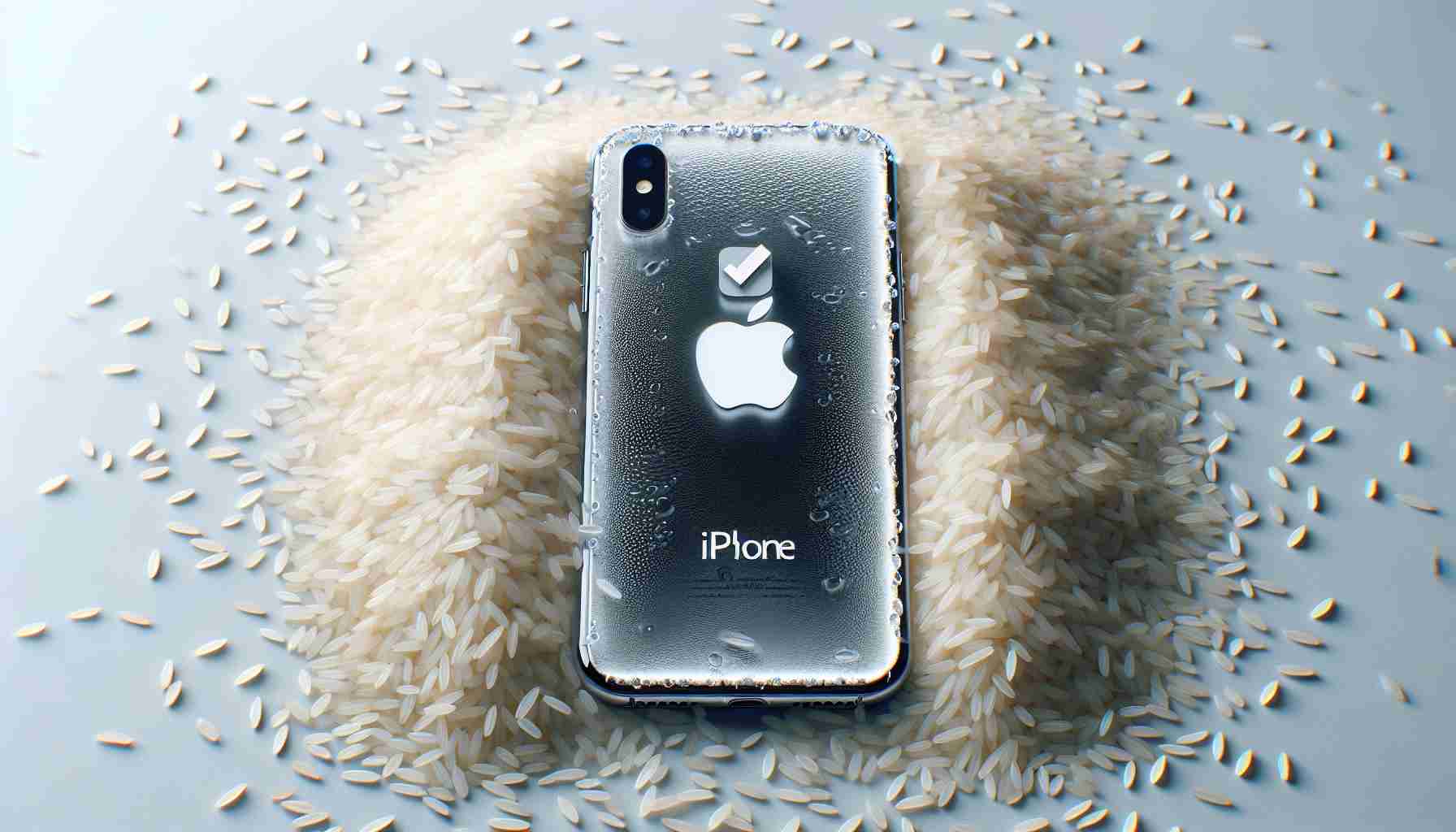A Common Misconception Corrected by Tech Giant
Many of us instinctively reach for a bag of dry rice when our smartphones take an unfortunate dive into water. It’s an age-old hack that has been claimed to save numerous devices. However, Apple has recently clarified that this method is not only outdated but might also be harmful to your iPhone.
Apple’s Official Advice on Handling a Wet iPhone
On Apple’s homepage, a direct address to the rice-drying tale is made clear: Avoid exposing your iPhone to a bed of rice. The tiny grains could potentially cause damage by finding their way into the device. Alongside this, using an external heat source like a hairdryer to dry your iPhone is also discouraged.
Steps to Take If Your iPhone Gets Wet
So, if not rice or hairdryers, what should one do? Apple suggests first disconnecting the iPhone from any peripherals (headphones, chargers, etc.). Then, gently tap the device with your hand while tilting it downwards to help expel fluids. Subsequently, leave the iPhone in a dry area with good airflow. Attempt to reconnect the charging cable after at least 30 minutes. If moisture warnings persist, keep the iPhone in the well-ventilated space for up to a day. For extensively waterlogged phones, a full 24-hour drying period may be needed.
Understanding the Risks of Rice
It is important to note that the concept of using rice to dry out electronics is based on the grain’s natural absorbent properties. Rice can indeed absorb moisture from the air, which has contributed to its reputation as a potential solution for wet electronics. However, Apple warns against this method due to the possibility of rice grains entering the iPhone’s ports, which can cause damage or block connectors.
Debunking the Myth
Despite the prevalence of the rice drying myth, there has been skepticism among tech experts regarding its effectiveness. Some argue that simply leaving the device in a dry place is equally, if not more, effective. Research suggests that the success associated with rice might actually be due to the passage of time rather than the desiccant properties of rice.
Apple’s Recommendations
Apple provides official guidelines for dealing with a wet iPhone: avoid charging, open all ports to allow air to flow through, and keep the device in a dry location with good air circulation. This approach minimizes potential damages and allows for the internal components to dry without introducing new risks.
Professional Assistance and Water Resistance Features
For iPhones that have taken a significant plunge, it is often recommended to consult a professional service, especially if the iPhone’s functionality is impaired. Moreover, it is vital to note that newer iPhone models have varying degrees of water resistance, which may protect against minor spills or brief immersion but do not make the devices waterproof.
Advantages and Disadvantages
Steering clear of rice has its advantages, such as preventing damage from rice grains and ensuring that the iPhone’s ports remain clear. However, for many, the disadvantage is the loss of a simple, at-home remedy. The effectiveness of alternative methods, like silica gel packets or specialized drying agents, might offer more effective solutions without the risks associated with rice but might not be readily available in a typical household.
For the most current information on how to handle a wet iPhone or to learn more about the features of Apple products, one can visit Apple’s official website at Apple. It’s crucial to be cautious about third-party advice and instead follow guidelines from reliable sources like the manufacturer or authorized repair centers.
The source of the article is from the blog motopaddock.nl
